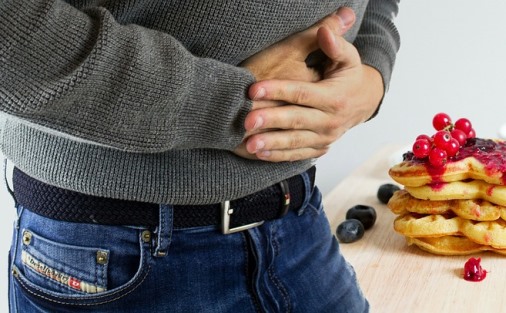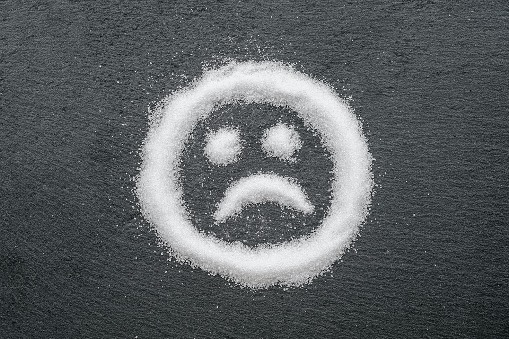PILES (HEMORRHOID) OVERVIEW
Piles also called as a hemorrhoid are swollen tissues that contain veins. Piles are located in the wall of the rectum and anus and may cause minor bleeding or develop small blood clots. Piles occur when the tissues enlarges, weaken and become free is often described as “varicose veins of the anus and rectum” generally becomes enlarged, bulged with blood vessels in and about the anus and lower rectum. Piles can be classified into two categories:
- On the basis of position: Internal, External and Interno-external
- On the basis of symptoms (Severity):
- Grade I: No Prolepses with presence of only prominent blood vessels.
- Grade II: Prolepses upon bearing down but automaticallyreduce.
- Grade III: Prolepses upon bearing down and requiremanual reduction.
- Grade IV: Prolapsed and cannot be manually reduced.
SYMPTOMS OF PILES (HEMORRHOID)
The symptoms of piles depend on the type present. Internal haemorrhoids is characterized with painless rectal bleeding while external haemorrhoids may produce few symptoms or if thrombosed significant pain and swelling in the area of the anus.The extreme piles may lead to complications like anaemia and thrombosed strangulated piles.
Often referred to as piles, hemorrhoids are a common condition that can be uncomfortable in the area around your bottom. They develop as the blood vessels in your lower body enlarge and sometimes become uncomfortable. The following are some brief explanations of the signs and symptoms of hemorrhoids:
Stitching and Sensitivity: Your lower back may experience itchiness or irritation. It is comparable to an obtrusive tickle that is persistent. Hemorrhoids can cause pain or discomfort, particularly when sitting, standing, or using the restroom. It resembles a slight discomfort or soreness in that location.
Pain and discomfort: Hemorrhoids can cause pain or discomfort, particularly when sitting, standing, or using the restroom. It resembles a slight discomfort or soreness in that location.
Bleeding: Occasionally, you may detect some blood in the toilet bowl or on the toilet paper when using the restroom. It may appear as little streaks or drips.
Swelling: Your lower abdomen may swell and enlarge slightly more than usual. Like a tiny lump that you may possibly feel.
Feeling a lump: There may be a tiny bulge or bump surrounding your buttocks. It resembles a little, touchable bump.
CAUSES OF PILES (HEMORRHOID)
PILES, also known as HEMORRHOID, develops when the blood vessels in your anal area swell and become irritated. There are a few common reasons for this:
Stress while defacating: Pushing too hard during a bowel movement can put too much pressure on the blood vessels underneath you, causing them to swell.
Sitting for long periods of time: Sitting on the toilet for long periods of time or sitting at your desk with little movement can disturb and pool blood vessels in your anus.
Constipation: Having constipation makes using the restroom challenging. You can strain more as a result, which is bad for the blood vessels in your bottom.
Being overweight: Carrying extra weight increases the pressure on your bottom’s blood vessels, increasing the likelihood of piles.
Pregnancy: A pregnant woman may get piles as a result of the expanding baby pressing against the blood veins in her lower abdomen.
Not Consuming Enough Fiber: Fiber acts as a digestive system’s assistant. Lack of fiber intake might cause your stool to become hard, which can cause straining.
Keep in mind that it’s crucial to take care of your bottom by eating healthfully, being active, and not exerting yourself excessively when you go to toilet.
PREVENTION OF Hemorrhoids or Piles
How to Avoid Hemorrhoids or Piles:
Water: Keep your faeces soft and simple to pass by drinking enough of water every day. This lessens the need to strain while using the restroom.
Consume fiber-rich foods, such as beans, whole grains, and fruits and vegetables. These foods contain fiber, which contributes to soft, regular stools.
Stay active by doing regular exercise and moving about. By enhancing digestion, this keeps your body healthy and can help prevent piles.
Avoid Straining: Don’t strain when using the restroom. Stress can exacerbate piles.
Avoid spending too much time sitting. An extended period of sitting, particularly on the toilet, might exert pressure on the veins near your bottom.
DIAGNOSIS FOR Hemorrhoids or Piles
A doctor will do a piles diagnosis, also known as a hemorrhoid diagnosis, to determine whether the patient has a problem with their lower area. Going to the restroom might hurt and be uncomfortable because of piles.
The patient typically discusses their symptoms and medical background with the doctor. If there is any bleeding, discomfort, or itching near the bottom, they may inquire. Additionally, they look for lumps or swelling.
To check for any issues, the doctor may occasionally use a special tool to peek inside the bottom. A scope is the name of this device, which functions as a miniature camera to improve the doctor’s vision.
Hemorrhoids or Piles MANAGEMENT BY DR MONGA MEDI CLINIC
Hemorrhoids, often known as piles, are effectively managed at the Dr. Monga Medi Clinic. Our knowledgeable staff specializes in aiding those who experience pain and discomfort in their lower body.
To provide relief, we provide a number of effective treatments. When a patient comes to the clinic, they get individualized attention. The doctors discuss their symptoms with patients and pay close attention to their worries. To alleviate discomfort, we might advise dietary and lifestyle modifications. The Dr. Monga Medi Clinic favors a wholistic strategy.
For more severe instances, we provide cutting-edge therapies. These include minimally invasive techniques that don’t require significant incisions. One of these techniques is referred to as “sclerotherapy,” in which the piles are injected with a fluid to make them smaller. One more approach is “laser treatment,” which makes use of light to reduce swelling.
PILES MANAGEMENT THROUGH AYURVEDA
According to Sushruta, Piles also called as Arshain sanskrit is a diseases in which vitiated Doshas along with Rakta (Blood) collects in the major vessels in body (PradhanDhamanis) and goes towards anal canal and create a swelling (Ankur).
Ayurvedic treatment mainly focuses on symptomatic relief and correction of anatomical deformity of the anal canal.
Kashar sutra ligation is highly recommended to piles patients in which medicated herbal coated thread are applied onto internal and external piles mass within 5-7 days withered piles mass falls off with cure rate of 97%.
Ksharkarma is yet another technique which involves the applying of a sclerosing agent like apamargksharsnuhikshar into the haemorrhoid which results in permanent endofibrosis and clinical obliteration of the vessel causing vein walls to collapse and the hemorrhoids to shrivel up with success rate of 70%.
Another treatment of piles include Pathadiyog which is a group of five drugs namely Cissampelospareira (Patha), Fagonia Arabica (Dhamasa), Aeglemarmelos(Bilva), Apiumgraveolens (Yavani) and Zinziberofficinalis (Shunthi).
The warm sitz bath of sesame oil is the hydrotherapy recommended for the conditions associated with increased pelvic congestion which is non-invasive in nature for uncomplicated haemorrhoids and varicose veins, but requires a high degree of patient’s compliance.
Few medicinal plants which are beneficial for treatment of Piles are: Centellaasiatica, AesculusHippocastanum, RuscusAculeatus, Gingko biloba, Rosacanina, Silybummarianum, Commiphoramukul, Azadirachtaindica, Emblicaofficinalis, Terminaliachebula, Cassia fistula, Calendula officinalis, Mimosa pudica, Vitexnegundo.
Ayurveda finally focuses on consumption of Pathya Cow milk, Butter, Buttermilk, Wheat, Ghee, Rice, Green vegetable, Regular sleep, Exercise, Regular diet, Non suppression of natural urges etc. for complete relief from piles.
FREQUENTLY ASKED QUESTIONS
Hemorrhoids, also referred to as piles, are rectum and anus veins that are large and irritated. They could make you feel uncomfortable, hurt, scratchy, or bleed.
Yes, Ayurveda offers holistic approaches to manage hemorrhoids. It focuses on balancing the body, diet, and lifestyle to alleviate symptoms and prevent recurrence.
Yes, Ayurveda can complement conventional treatments. It’s advisable to inform both your Ayurvedic practitioner and medical doctor about the treatments you are receiving from each approach.
Ayurveda suggests a high-fiber diet with plenty of fruits, vegetables, whole grains, and fluids. This promotes smooth bowel movements and reduces strain.
Ayurveda suggests herbs like Triphala, Haritaki, and Aloe Vera for their potential to improve digestion, relieve constipation, and reduce inflammation.
Maintain regular exercise, avoid sitting or standing for prolonged periods, and practice stress-reduction techniques like yoga and meditation.
Yes, Ayurvedic treatments like sitz baths with warm water, herbal ointments, and oil massages can provide relief from discomfort and pain.
Adopting a balanced diet, staying hydrated, avoiding straining during bowel movements, and maintaining good hygiene are key preventive measures.
If you experience persistent bleeding, severe pain, or if hemorrhoids don’t improve with Ayurvedic measures, consult a healthcare provider for proper evaluation and advice.











